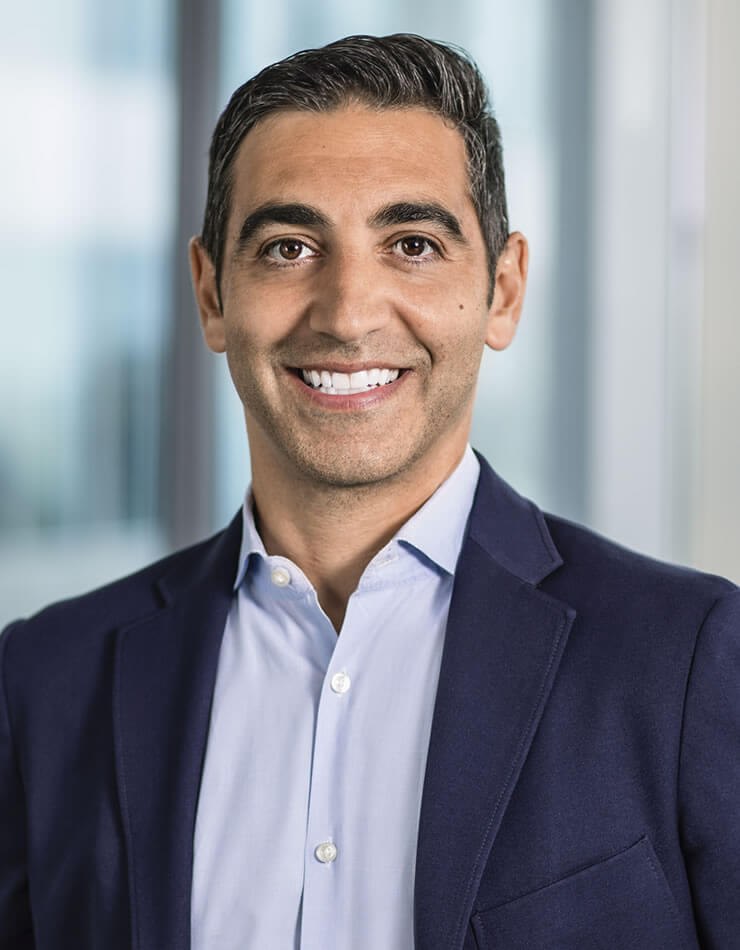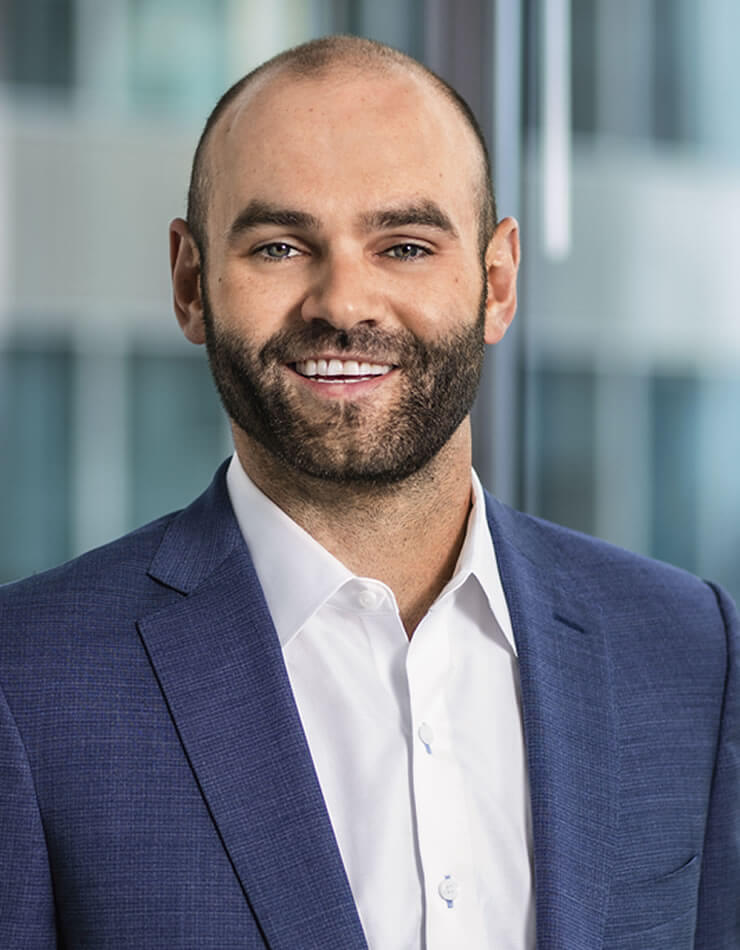Oakmark Equity and Income Fund – Investor Class
Average Annual Total Returns 03/31/23
Since Inception 11/01/95 9.36%
10-year 7.02%
5-year 5.72%
1-year -6.49%
3-month 3.23%
Expense Ratio: 0.83%
Expense ratios are from the Fund’s most recent prospectus dated January 28, 2023; actual expenses may vary.
Past performance is no guarantee of future results. The performance data quoted represents past performance. Current performance may be lower or higher than the performance data quoted. The investment return and principal value vary so that an investor’s shares when redeemed may be worth more or less than the original cost. To obtain the most recent month-end performance data, view it here.
The biggest investor debate entering the first calendar quarter was whether the Federal Reserve’s aggressive interest rate hikes would lead to a recession. Although we still don’t have a definitive answer to that question, these aggressive hikes did play a role in this quarter’s biggest news, the collapse of both Silicon Valley Bank and Signature Bank, which marked the biggest setback in the banking industry since the global financial crisis. Other than the bank failures, however, these two events actually have very little in common. The financial crisis began as a credit problem. A precipitous drop in housing prices led to a large decline in the value of mortgage-backed securities (MBS). These securities comprised a significant part of many financial companies’ assets, so the declines left many of those companies with little or no equity value. These problems were magnified further because many mortgages were packaged in opaque securities that were difficult to value. In response, the Federal Reserve cut the Federal Funds rate to zero and implemented numerous policies to support the banks and provide them with liquidity. Lawmakers passed the Dodd-Frank Act in 2010, which increased capital and liquidity requirements for the nation’s largest banks and mandated yearly stress tests.
Today’s concerns are driven more by liquidity and the rapid changes in interest rates than by credit quality. After Covid-19, many banks were inundated with deposits. For some regional banks, like Silicon Valley Bank, these deposits were largely uninsured (above $250K) and sourced from commercial relationships, wealthy clients and venture capital-backed firms. Historically, such deposits have been relatively stable, so regulators were not alarmed. Banks used these deposits to purchase longer maturity government-backed mortgage securities. Although these securities have no credit risk, they do have duration risk, meaning they can go down in value if interest rates increase. Duration risk didn’t worry many bank treasurers because the Fed had kept short-term rates close to zero for more than a decade. However, this surge in deposits and banks’ subsequent MBS-buying could not have been more poorly timed as the Federal Reserve soon began raising rates at its most aggressive pace in decades. The rapid increase in interest rates left much of the banking sector with mark-to-market losses on their securities portfolios. While not ideal, such losses typically do not pose a major threat to most banks. They represent a relatively small percentage of their equity, and most banks have enough sources of liquidity and stable enough deposit franchises that they can just allow these longer duration securities to mature at par. However, for the banks that most aggressively extended the duration of their MBS securities and also had an exceedingly high percentage of uninsured deposits, they faced a toxic combination. The uninsured deposits turned out to be much less sticky than history would have suggested. Technology makes today’s depositors much more interconnected and also makes it much easier for depositors to quickly transfer their money to other institutions. Once the bank runs started, transfer requests drained both banks’ liquidity within days, and they were taken over by the FDIC.
In response to the crisis, the FDIC insured all deposits of both Silicon Valley Bank and Signature Bank. The Federal Reserve also provided banks with access to several facilities to bolster their current liquidity. For the banks with manageable asset marks and a higher percentage of insured deposits, these actions seem to have stabilized confidence. Longer term, smaller banks will probably face more scrutiny, and the 2017 rule that exempted smaller banks from the subjective portion of the Federal Reserve stress tests will likely be rescinded. Some of the liquidity rules that apply to larger banks will now also probably be applied to smaller banks. To better match asset-liability duration, regulators may count at least some losses in the available-for-sale (AFS) portfolio of the smaller banks against capital. The largest banks will also likely be assessed a disproportionally high fee to replenish the FDIC insurance fund. One thing that does not seem likely to happen, however, is further consolidation by the nation’s largest banks. This is a nonstarter politically, even though there is sound fundamental logic behind it. Even with the short-term pressure from the higher FDIC fee and the absence of consolidation, we believe that the nation’s largest banks likely take deposit share and further improve their competitive positions.
The Oakmark Equity and Income Fund has 29% of its equity portfolio in financials. This made the March sell-off painful, but we do not believe that this has meaningfully changed the value of most of our financial equity holdings. In fact, we were adding to financial positions throughout March. We believe that one way to analyze our financial holdings is to look at them in different buckets given their various business models and risk profiles. Almost 30% of our financial exposure is in insurance companies and insurance brokers. Insurance companies have very stable liability profiles, so the main risk is a change in asset values. We are comfortable with their investment portfolios and think these stocks are quite attractive. Around 5% of our financials are asset managers. These companies are exposed to market risk but should have strong inflows and benefit from rising stock and fixed income markets. Two percent of the portfolio is in Intercontinental Exchange, an exchange operator and mortgage technology provider that faces few of the risks of a typical bank. This leaves a little over 40% of the financials exposure in a varied group of banks and lenders. About 5% of that portfolio is in Bank of America and State Street. These two banks are designated as Systematically Important Financial Institutions and are held to higher regulatory standards. Our largest single financials holding is Bank of America, which has grown deposits during March, and we believe it is one of the best managed companies in the sector. State Street is a trust bank that does very little lending, has significant excess capital, and should benefit from rising net interest income. Capital One and Ally Financial are consumer lenders whose deposits are primarily insured deposits that should be quite stable. Their near-term earnings could be pressured by slowing economic growth, but we believe that both trade at mid-single-digit multiples of their normalized earnings. The last financials holding is the discount brokerage firm Charles Schwab. Of all our financials holdings, Schwab is the most impacted by current events. Its banking segment has experienced a steady outflow of deposits, which were reinvested in the firm’s money market funds. The company has also experienced large downward marks on its MBS portfolio. What gives us comfort is that Schwab has enough liquidity to support its operations even if all deposits leave, which we believe is very unlikely to happen. These events will no doubt impact Schwab’s near-term earnings power, but we believe it trades at an attractive multiple of earnings for a company we expect to grow net new assets at a high single-digit rate organically.
First Calendar Quarter Review
The Equity and Income Fund (“the Fund”) increased 3.3% during the first calendar quarter, compared to a 4.3% increase for the Lipper Balanced Fund Index. For the trailing three years, the Fund is up 15.1%, compared to a 9.6% increase for the Lipper Index. Since its inception in 1995, the Fund’s compounded annual rate of return is 9.4%, while the Lipper Index’s return is 6.7%. The equities were up 4.4% in the quarter compared to a 7.5% gain for the S&P 500 Index. The equities portion of the Fund underperformed this quarter due to the overweight in financial stocks and the underweight in technology stocks. The Fund is managed as an all-capitalization fund, and the mid-cap stock performance trailed the larger stock performance. This is a continuation of a more than decade-long trend of mid-cap underperformance. We continue to find numerous opportunities in the mid-cap universe and believe these stocks increase the attractiveness of the overall portfolio. The fixed income portion of the Fund was up 2% versus 3% for the Bloomberg U.S. Aggregate due to a slightly lower duration and exposure to Silicon Valley Bank bonds.
The largest contributors to the portfolio’s return in the quarter were Alphabet, BorgWarner, Amazon, Warner Bros. Discovery and TE Connectivity. The largest detractors were Charles Schwab, Bank of America, Glencore, American International Group and EOG Resources. As discussed earlier in the letter, this was a rough quarter for financial stocks, which can be seen in the biggest detractors.
Transactions
We added two new positions, Corebridge and Wendy’s, in the quarter. Corebridge is a life and retirement company that was partially spun off from American International Group (AIG) through an initial public offering last fall. Corebridge has extensive, long-standing relationships with many of the largest financial institutions to sell various retirement products. It is also one of the largest retirement service providers to the education market through VALIC Financial Advisors. It also operates a high-performing, seasoned life insurance business. The market is valuing the company like it is just a variable annuity provider despite its much more diversified and stable earnings stream. Part of the discount is due to the lack of liquidity and an overhang from AIG’s 77% ownership, which will eventually be brought to market. Trading at five times our estimate of normalized distributable cash flow, the stock is highly attractive to us, and we are willing to wait for the ownership overhang to resolve itself.
Wendy’s is the second-largest quick-service burger chain in the U.S. This iconic brand generates $13.3 billion of systemwide sales from 7,095 restaurant locations around the world. Wendy’s is an asset-light franchisor that earns most of its profits from royalties, franchise fees and rent. The business is insulated from food and labor inflation since 95% of the restaurant base is owned and operated by franchisees. Wendy’s topline has proven remarkably resilient through diverse economic climates, producing 12 straight years of positive same-restaurant sales. The company is well-positioned for accelerating topline growth due to its recent launch of a breakfast menu, steady market share gains, international expansion and new restaurant openings. Despite these favorable characteristics, we had an opportunity to purchase shares at ~17x free cash flow, representing a discount to its quick-service restaurant peers as well as private market transactions.
During the quarter, we eliminated three positions: Howmet, Keurig Dr Pepper and LivaNova. Howmet performed well and reached our sell target. This is our second successful investment with CEO John Plant, whom we rank among the top CEOs. Keurig was another successful holding that reached our sell target. We purchased LivaNova with the thesis that the core medical technology business was trading below private market value despite the company’s promising pipeline of future devices. Although the investment was slightly profitable for the Fund, both the base business and pipeline failed to meet our fundamental expectations, so we decided to sell our position in favor of more attractive alternatives.
We would like to thank our fellow shareholders for their investment in the Fund and welcome any questions or comments.
The securities mentioned above comprise the following preliminary percentages of the Oakmark Equity and Income Fund’s total net assets as of 03/31/23: Ally Financial 2.0%, Alphabet Cl A 4.4%, Amazon.com 3.2%, American Intl Group 1.3%, Bank of America 2.9%, BorgWarner 1.9%, Capital One Financial 1.3%, Charles Schwab 0.9%, Corebridge Financial 0.2%, EOG Resources 1.1%, Glencore 2.8, Howmet 0%, Keurig Dr Pepper 0%, LivaNova 0%, Signature Bank 0%, Silicon Valley Bank 0%, State Street 1.2%, TE Connectivity 2.6%, VALIC 0%, Warner Bros. Discovery 0.9% and Wendy’s 0.6%. Portfolio holdings are subject to change without notice and are not intended as recommendations of individual stocks.
The Bloomberg U.S. Aggregate Index is a broad-based benchmark that measures the investment grade, U.S. dollar-denominated, fixed-rate taxable bond market. The index includes Treasuries, government-related and corporate securities, mortgage-backed securities (agency fixed-rate and hybrid ARM pass-throughs), asset-backed securities and commercial mortgage-backed securities (agency and non-agency). This index is unmanaged and investors cannot invest directly in this index.
The S&P 500 Total Return Index is a float-adjusted, capitalization-weighted index of 500 U.S. large-capitalization stocks representing all major industries. It is a widely recognized index of broad, U.S. equity market performance. Returns reflect the reinvestment of dividends. This index is unmanaged and investors cannot invest directly in this index.
The Lipper Balanced Fund Index measures the equal-weighted performance of the 30 largest U.S. balanced funds as defined by Lipper. This index is unmanaged and investors cannot invest directly in this index.
The Fund invests in medium- and lower-quality debt securities that have higher yield potential but present greater investment and credit risk than higher-quality securities, which may result in greater share price volatility. An economic downturn could severely disrupt the market in medium or lower grade debt securities and adversely affect the value of outstanding bonds and the ability of the issuers to repay principal and interest.
The Oakmark Equity and Income Fund’s portfolio tends to be invested in a relatively small number of stocks. As a result, the appreciation or depreciation of any one security held by the Fund will have a greater impact on the Fund’s net asset value than it would if the Fund invested in a larger number of securities. Although that strategy has the potential to generate attractive returns over time, it also increases the Fund’s volatility.
The information, data, analyses, and opinions presented herein (including current investment themes, the portfolio managers’ research and investment process, and portfolio characteristics) are for informational purposes only and represent the investments and views of the portfolio managers and Harris Associates L.P. as of the date written and are subject to change and may change based on market and other conditions and without notice. This content is not a recommendation of or an offer to buy or sell a security and is not warranted to be correct, complete or accurate.
Certain comments herein are based on current expectations and are considered “forward-looking statements”. These forward looking statements reflect assumptions and analyses made by the portfolio managers and Harris Associates L.P. based on their experience and perception of historical trends, current conditions, expected future developments, and other factors they believe are relevant. Actual future results are subject to a number of investment and other risks and may prove to be different from expectations. Readers are cautioned not to place undue reliance on the forward-looking statements.
All information provided is as of 03/31/2023 unless otherwise specified.









